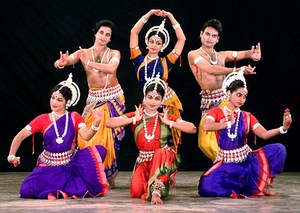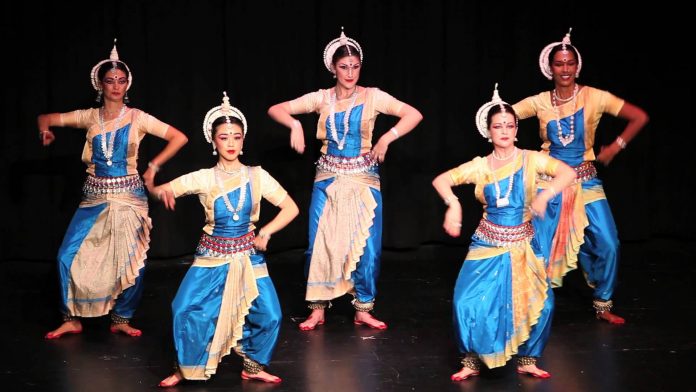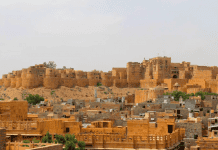India – a land as vibrant as the strands that make up a tapestry and a land that cradles an ancient civilization where umpteen festivals are celebrated with dance and music. The leitmotifs of many of these dances are unpretentious – taken from everyday rituals: sowing, reaping the harvest, rejoicing victory in war or conquest in a hunt. In others, Gods are propitiated or the seasons acclaimed. The classical forms are thematic in content to the folk forms which come with a certain gaiety, strength and resilience. Depending on the level of social and cultural development, dances can be divided into three categories – tribal, community, and traditional or classical.
There is not a region in India that does not have its own characteristic dance and songs. These dances have survived through many centuries of Indian history and have provided continuity to the Indian tradition. There are six basic classical or art-dance forms – Bharatnatayam, Kathak, Kathakali, Manipuri, Kuchipudi and Odissi.

Odissi
Odissi is dominated in its music and poetic content by the 12th century composition called Gita Govinda. A close parallel to the Bharatnatayam style, Odissi was performed by women called Maharis in the temple of Jagannath in Puri. Later, men dressed as women performed this dance in the temple courtyard. Sculptural evidence relating to this dance form goes back to the 2nd century BC. From the 12th century onwards, both manuscripts as well as inscriptions speak of the dominance of ritual dances in temples and entertainment in village squares.
Present Odissi as a solo form has been revived during the last few decades. Its recital is created on a simple flair wherein the dancer performs the thrice recoiled (tribhanga) position of Indian sculpture. The range involves steps, which are based on pure dance (nrtta) pattern evoking the sculptural stances of the temples of Odisha. The poses are looped in conjunction with several musical beats or taals and the dances are executed to poetry ranging from invocations to Ganesha intoned to the verses of Gita Govinda.
The element of movement in Odissi is called the arasa. The dancer – in this dance form – has room to express within the vocal frame and the liberty to render the poetic line in a variety of ways to elicit a single frame of mind.

Manipuri
Manipuri is the dance form that comes from the north eastern region of India. The vital part of movement is known as the chali and it is on this that the dance is built. The theme of Radha-Krishna and the gopikas or milkmaids comprise a large part of the Manipuri repertoire. Dances known as the Rasa dances developed as an outcome of the alliance of the Vaishnava cult and the several highly-developed forms of ritual and religious dances which were flourishing in the area.
Manipuri is different from both Bharatnatayam and Odissi but similar in the sense that it can it can also be broken up into patterns of pure dance as well as mime segments. However, there is no intimidating expression and the virtual poise of the face and the movements of the fingers are similar to the Southeast Asian dance styles. The torso is relaxed with the upper chest and waist moving in opposition. The arms move as one unit with no sharp angles and the fingers move in circles, semi-circular curves – folding and unfolding gradually.
The Sankirtanas, a group of classical dances of the area, follow a more vigorous, masculine technique with jumps and elevations but no leg extensions. These dances are generally performed by men with typical Manipuri drums called pungs. A large variety of intricate, rhythmic patterns are played on the drum and the cymbals. The Nata Sankirtana often precedes the Rasa.
Image courtesy: Orissa Tourism and Manipur Tourism



















